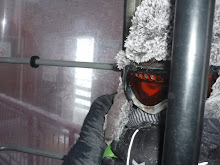'Ouest Est, Programme Poster, Illustration: Helge Reumann, Client: Kulturhallen Dampfzentrale Bern, Print: Serigraphie Uldry, 2006'
I have chosen to post this image because the illustration reinforces the Swiss interest in rectangular and modular design. The horizontal and vertical lines of the architectural structures contrast nicely with the curves of the flames, mountains and use of typography.























.jpg)

.gif) "This Shockwave application, programmed by Jürg Lehni, was initially developed as a design tool for generating a set of fonts based on the legendary Rubik Cube.
"This Shockwave application, programmed by Jürg Lehni, was initially developed as a design tool for generating a set of fonts based on the legendary Rubik Cube.



.jpg)







.jpg)
.jpg)
.jpg)
.jpg)
.jpg)
